”Come on guys. The plane’s waiting. Let’s go!”. Reentering the DHC-6 he had just jumped from, Sir Lewis Hamilton does it with all the brisk grace of a world-renowned superstar. Old parachute still unpacked, and he’s pushing us to follow him.
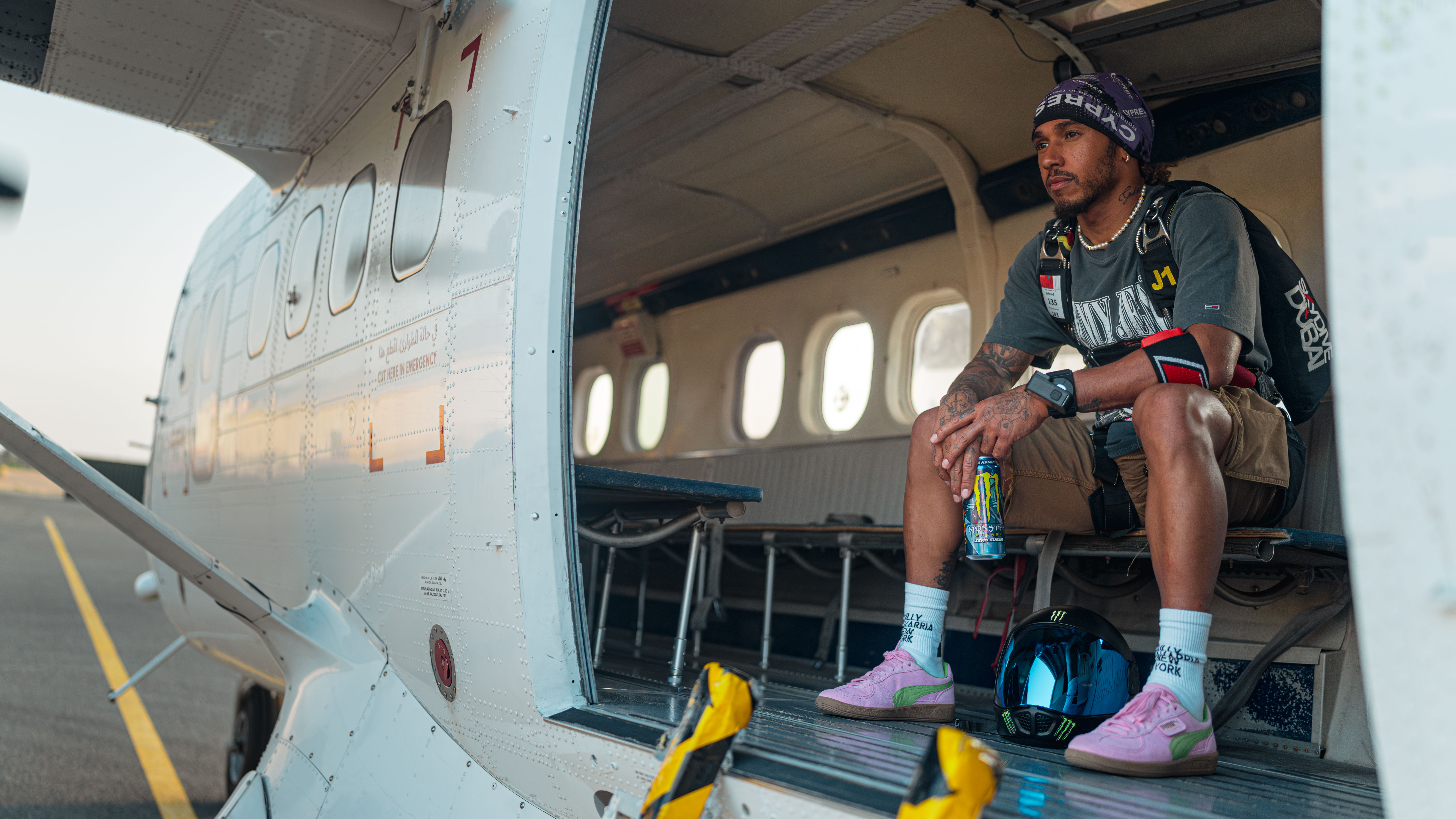
Regretfully, I haven’t even left the hangar yet, world champion seven times over. A very courteous Spanish instructor, who now looks like a 30-stone, swaying science experiment with two heads and four legs, is strapped to me.
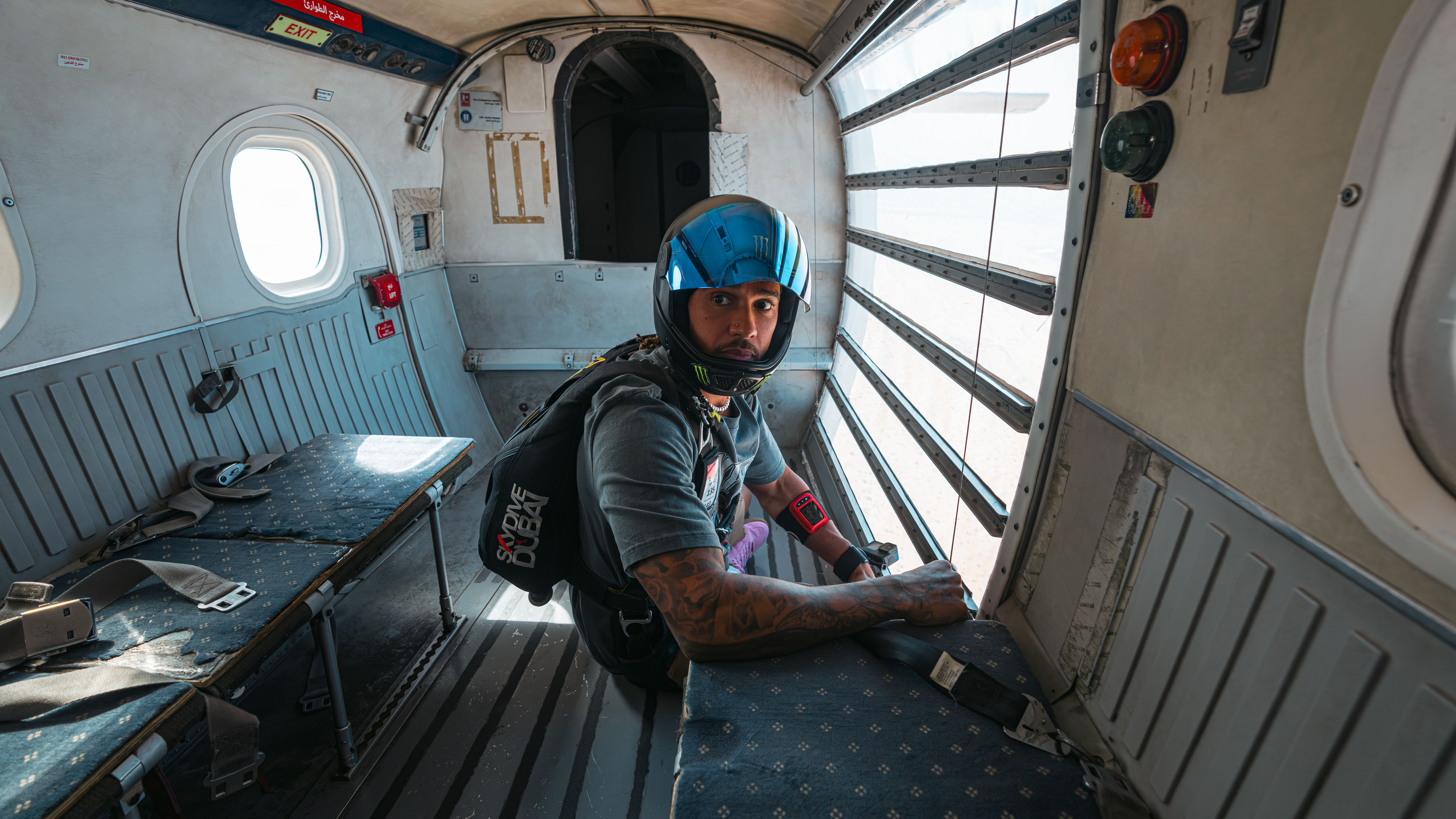
It appears as though yelling, “Get in there, Lewis,” while gesturing toward the jet would go unnoticed. Rather, I choose to give the standard thumbs-up, which is more akin to a hitchhiker attempting to catch a ride along the A14 than it is to Top Gun.
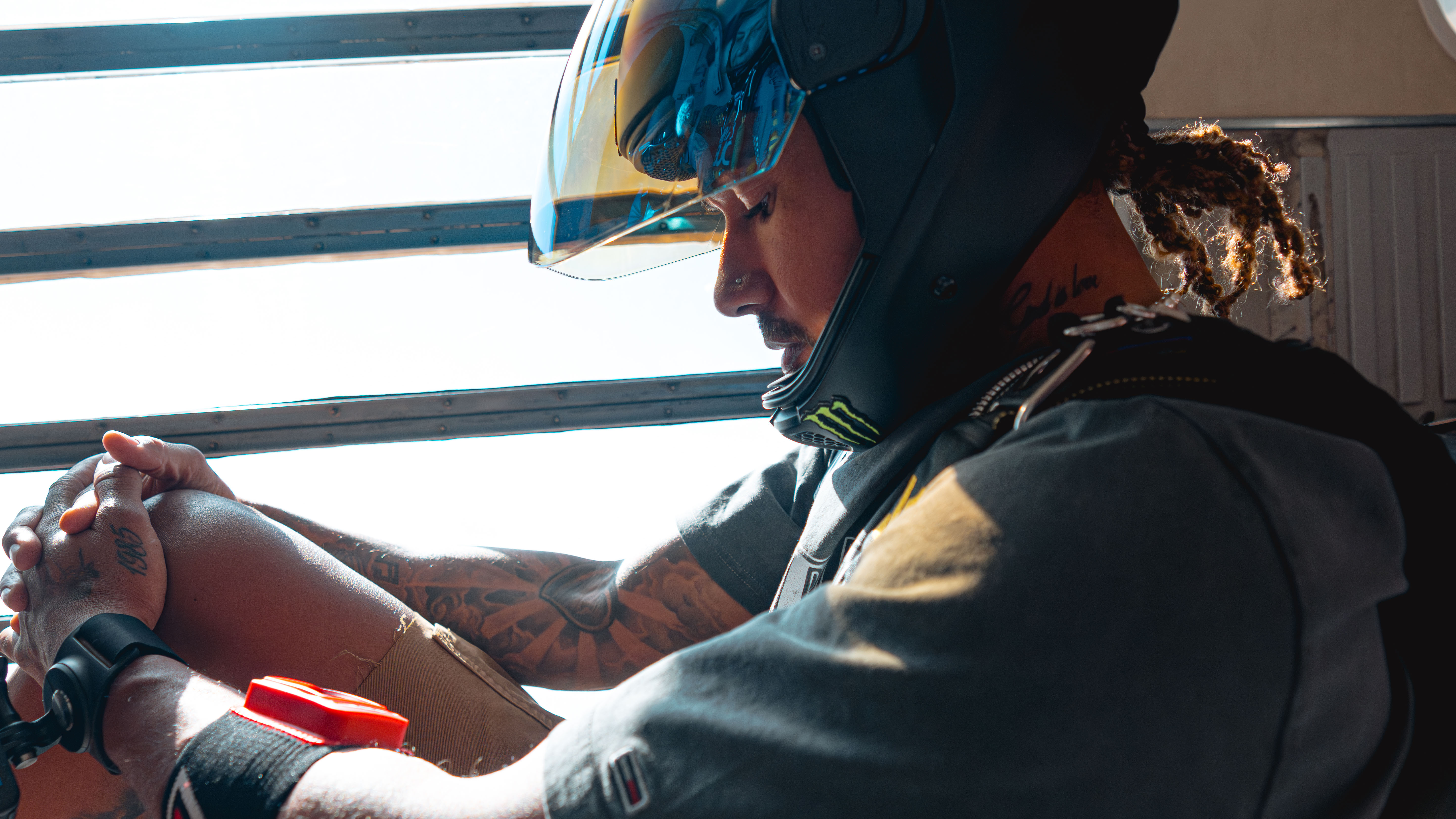
Lewis seemed to be processing the next few minutes in an almost meditative state, exuding calmness inside the aircraft. “With cameraman James and me, what jump do you think we should try next?” he asks.
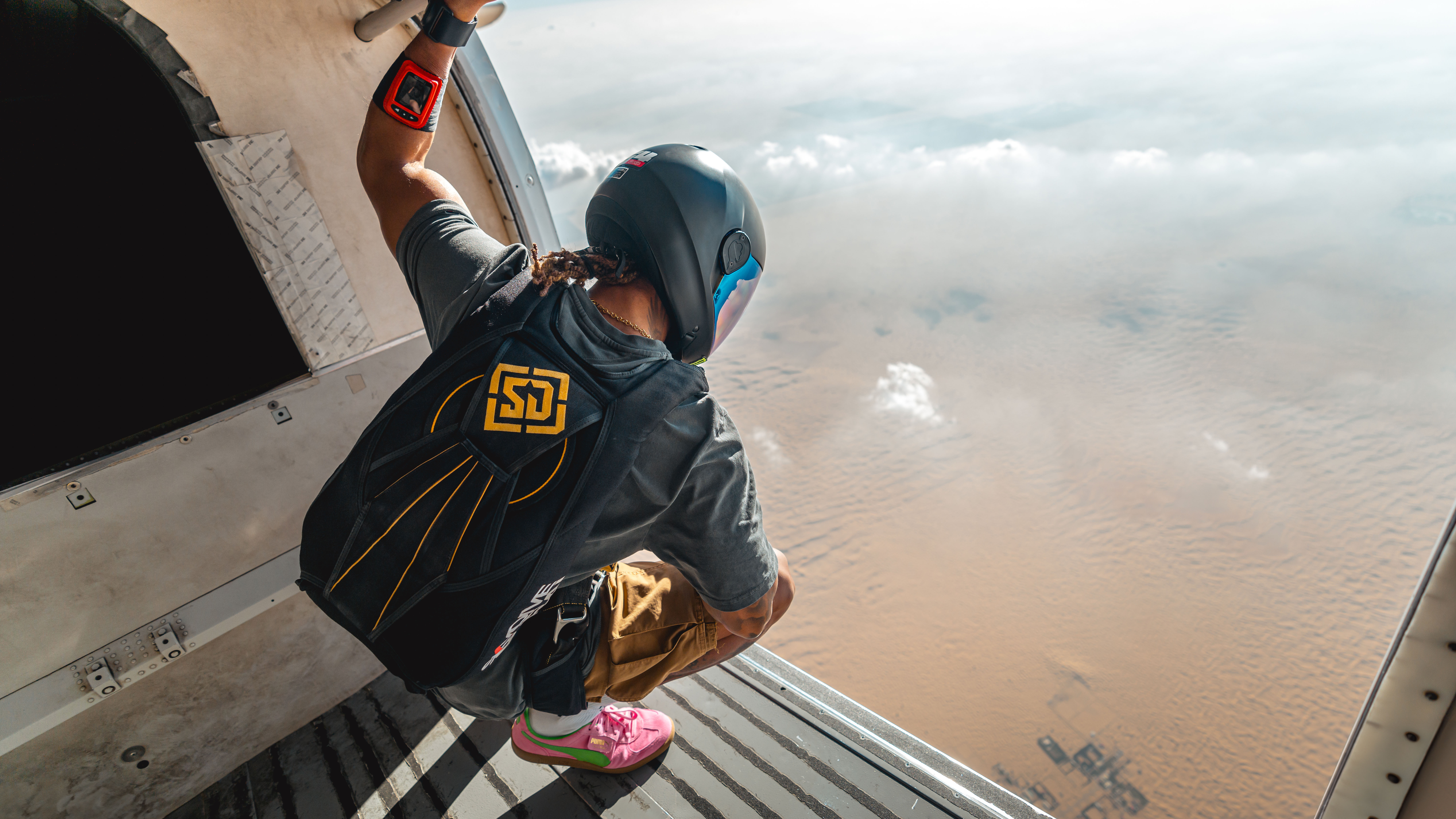
Lewis has seen a solution and determined precisely where we can stand to acquire the shot before either of us tries to piece together an explanation based on our lack of experience skydiving.”Spider-Man? It always looks sick, so I really enjoy that one,” he continues. Could you all please be at the door? I’ll scale out, cling to the rail, and then tumble back down. How do you feel?
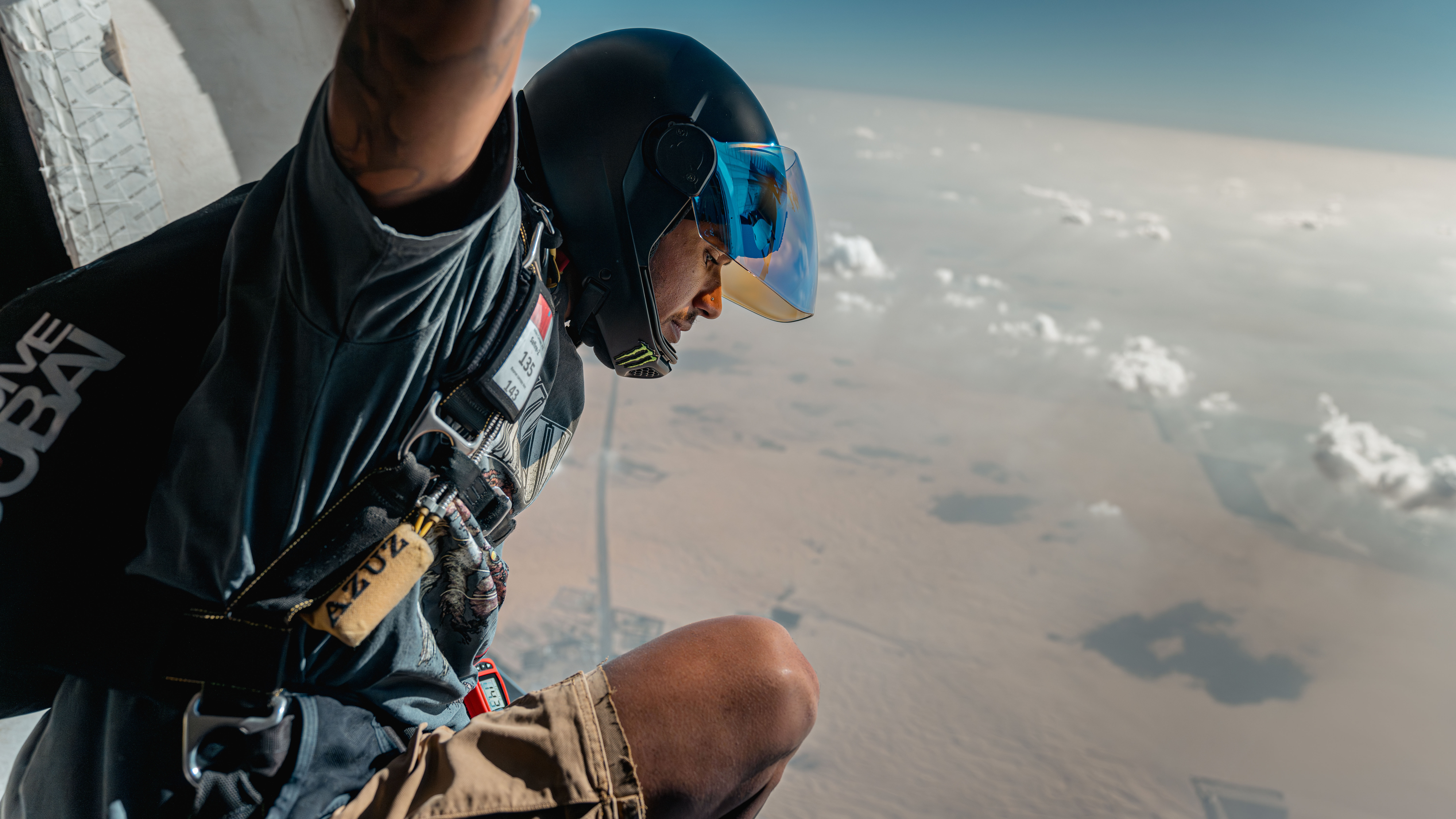
We both give a nod of approval. Even by Top Gear standards, it seemed improbable to witness one of the best Formula One drivers ever scale and jump from a plane at 14,000 feet in the realm of automotive bingo.
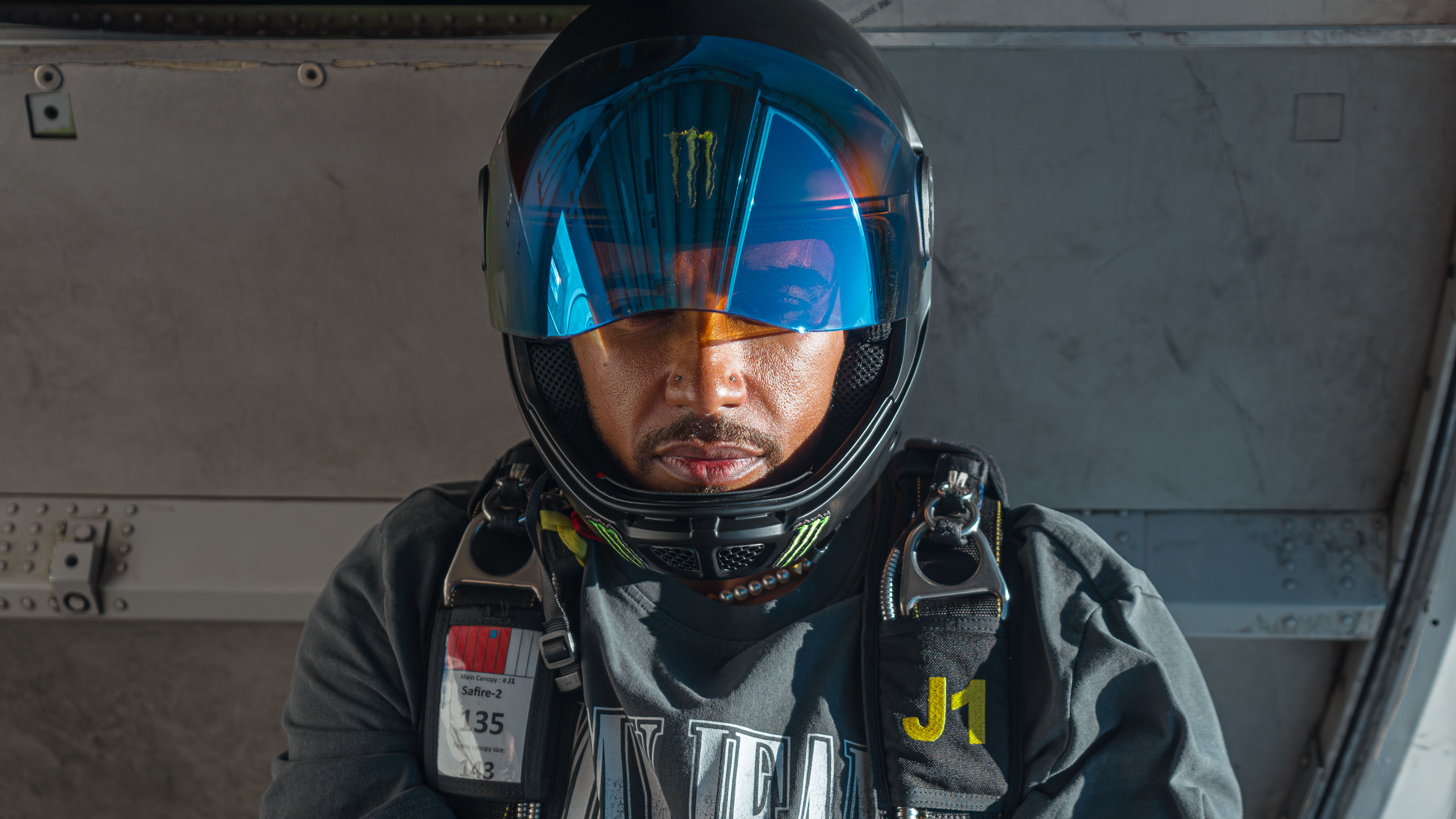
Nevertheless, even with cameras recording every move and this mission at hand, an F1 champion’s intellect is dissecting every scenario like a piece of software with hundreds of lines of code. Not only is he considering the leap, but he’s also planning our shots and making sure nothing would jeopardize them.
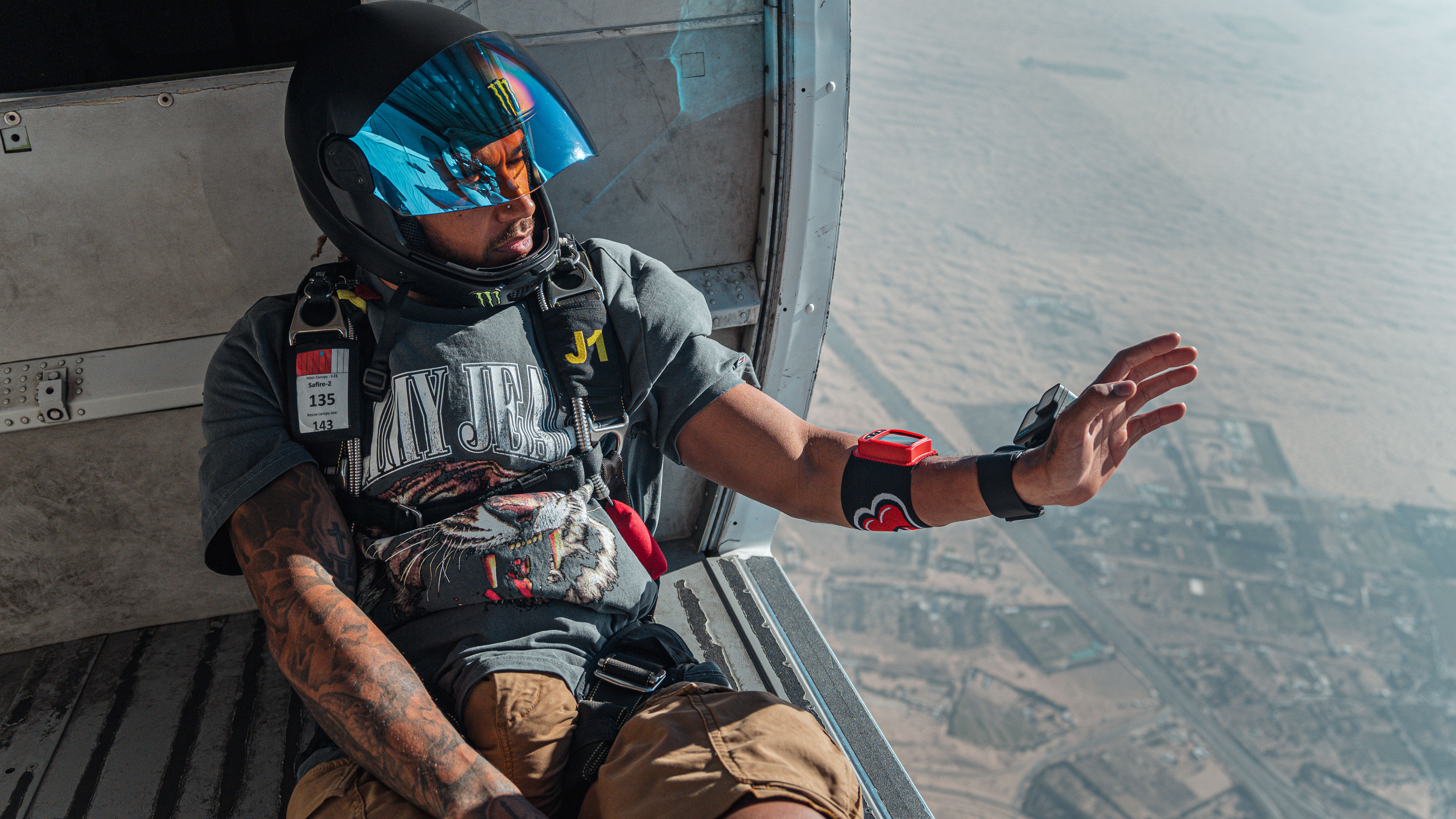
After everything is agreed upon, Lewis opens the hatch and jumps right into the role. No forced facial expressions, no uncomfortable posture. He simply understands expectations. Calmly, “You guys all ready?” he says.
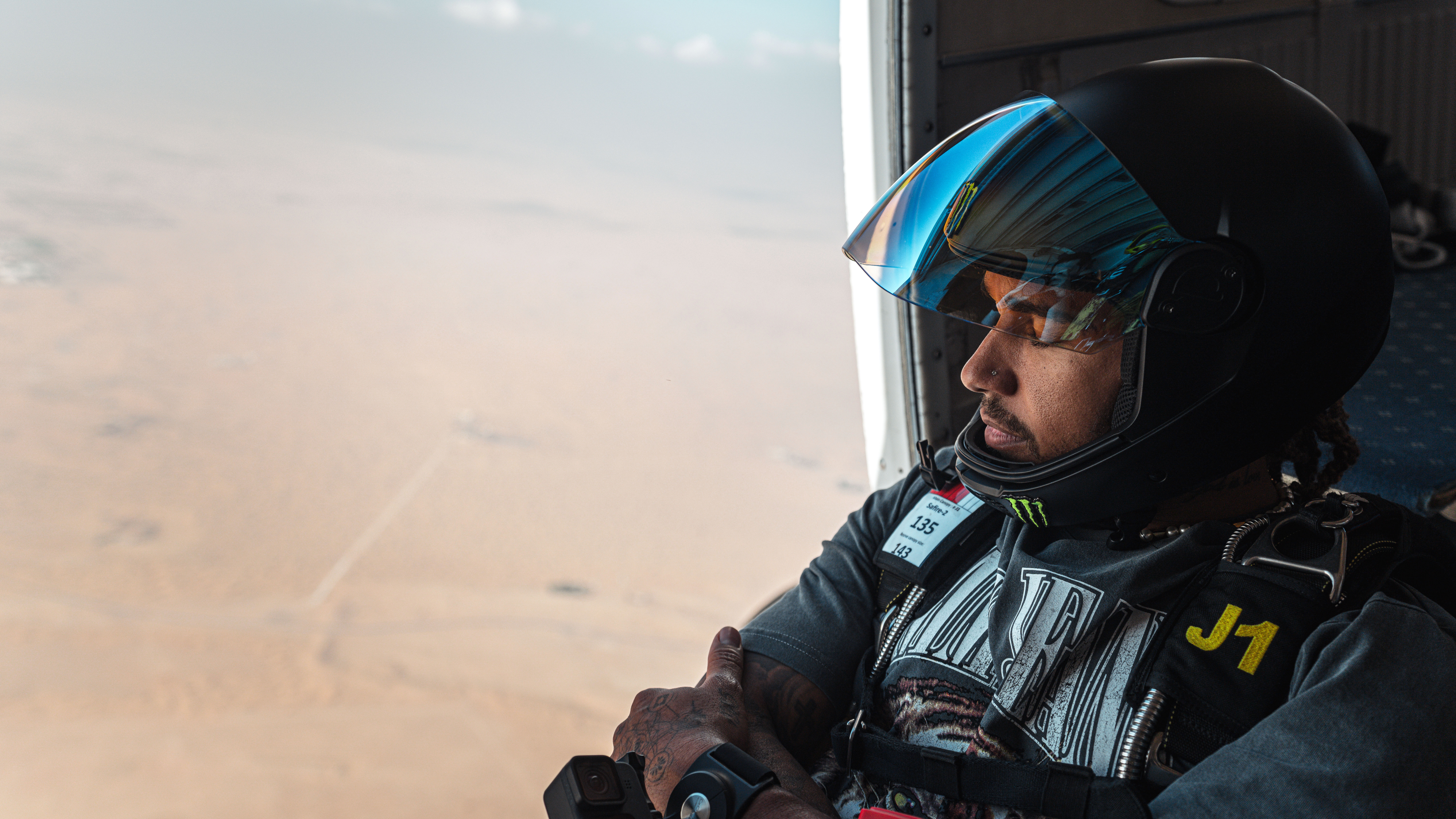
My first reaction is to say “no,” but instead the hitchhiker thumb from before reappears. Now that we have a fist bump, the countdown starts. “One, two, three.” WHOOO!
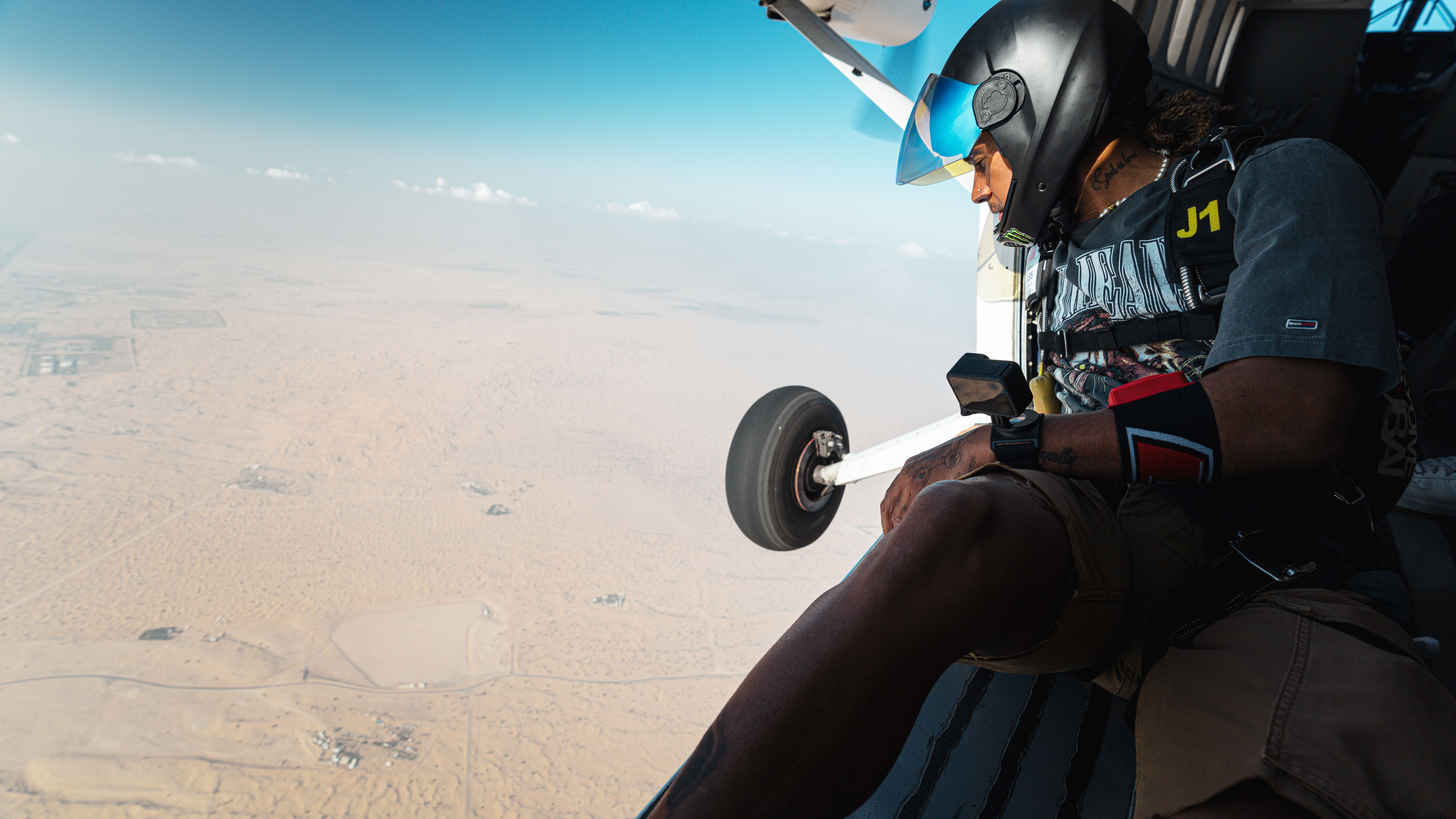
There was still a frenzy of tasks and deliverables for drivers to complete at the end of November of last year, with the longest Formula One season in history finally coming to a finish, before taking that well-earned break.
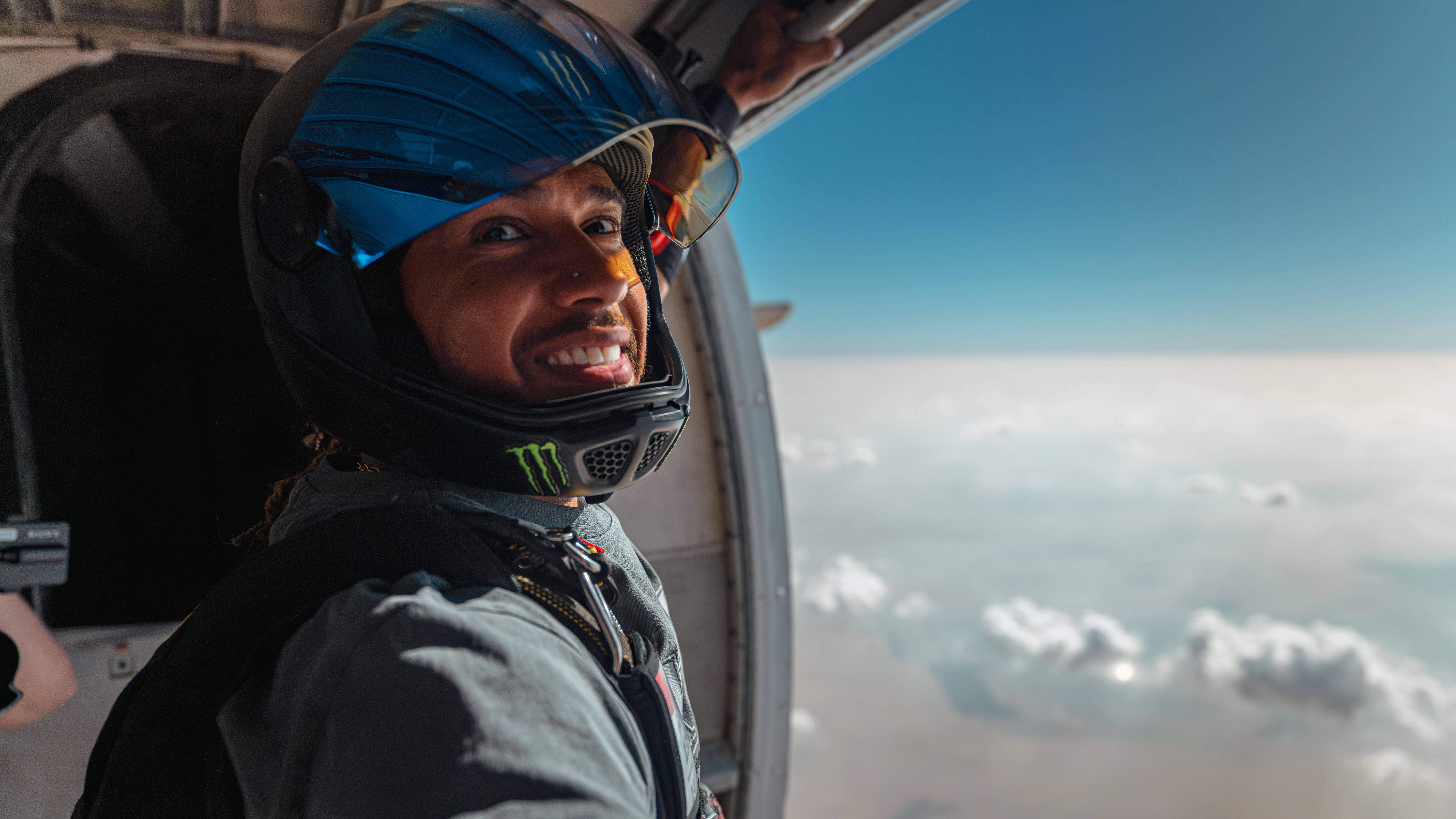
While some people endure the grueling process of attending corporate events, others are shown around logistics companies in an attempt to maintain their multimillion-dollar sponsorship arrangements.
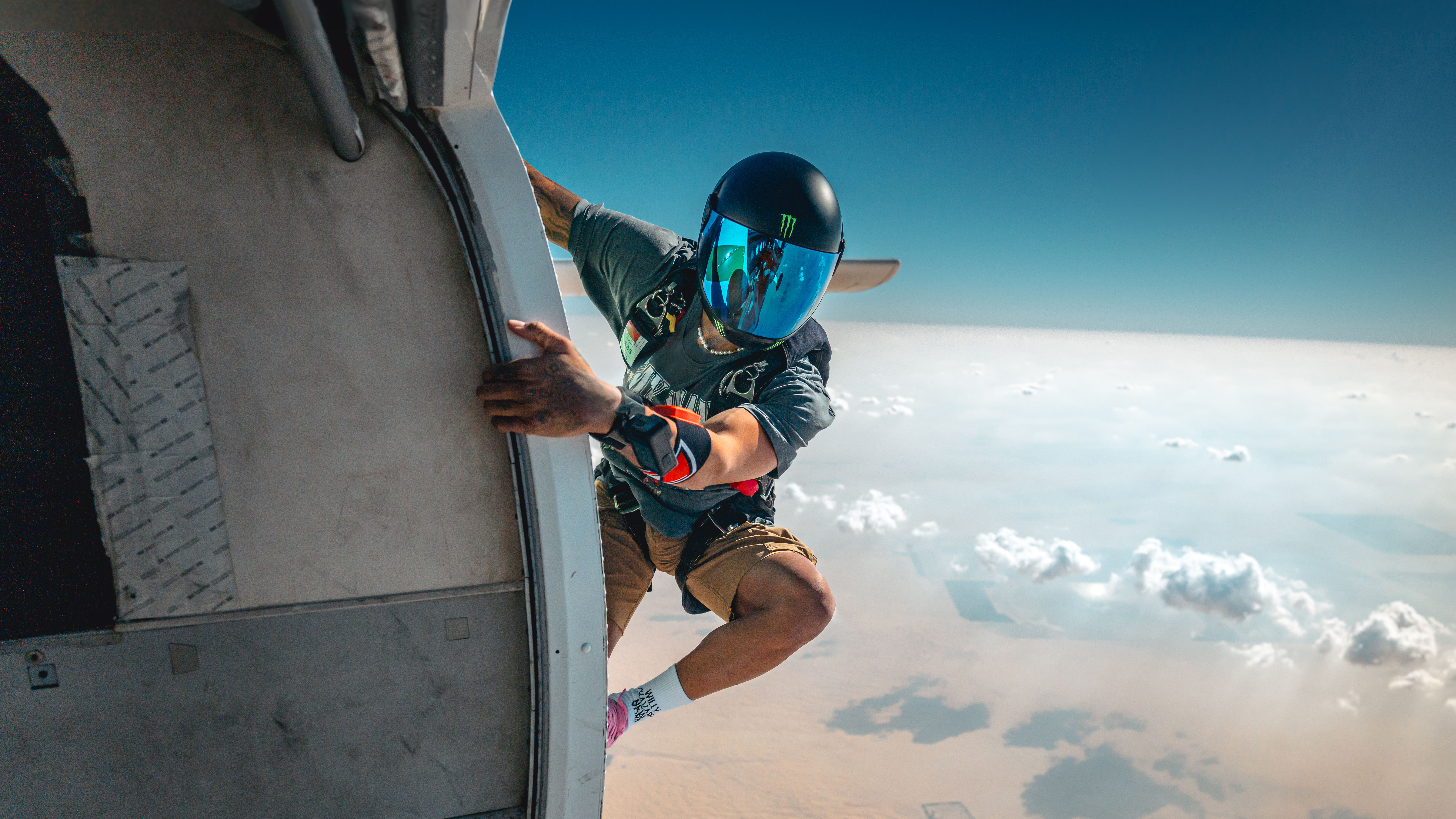






However, Lewis and his longtime sponsor Monster Energy have a pretty great arrangement in place. Lewis has competed for more than three decades of his life. One that goes something like this: tell us what you want to do, and we’ll figure out how to get it done.
An individual may jump at 14,000 feet and achieve 120 mph in five to ten seconds on average. In comparison to a current F1 car, which can reach that in just over four seconds, that is quite pedestrian. However, you have a full 45 seconds of unbroken, full-throttle flying during a free fall. Getting along? In just twenty seconds, you’ll be back on the brakes on even Spa’s longest part. “Everything is covered,” Lewis chuckles. “I want to enjoy my life, but I don’t really take big chances. He continues, “I firmly think that no day is guaranteed.
Lewis estimates that, in spite of his restricted free time, he has completed about 80 solo jumps, each of which has allowed him to try increasingly difficult stances and maneuvers, some of which he has even practiced in the wind tunnel. Apparently it’s not easy to turn off an F1 driver’s head, even after nine months of touring the world at the greatest level. While some might immediately head to the beach, others might pick up sim racing again. Lewis uses plane jumping as one of his means of escape.
Lewis, eager to do as many jumps as possible, inquires as to the latest potential time for a final jump. Now that the bothersome, waddling photographers have left him alone with the two pilots, he can enjoy a rare moment of complete serenity. He asks the group if they can jump into the sunset. “It would seem really amazing!” For the last jump of the day, Lewis intends to make a show even without a video team, strapping multiple GoPro cameras to his body before getting back on board and executing his plan.
“Come on, one last jump. I’m going to sprint all the way back in the aircraft before I jump out. Should I perform a flip?
Lewis and I have little time together today, but it’s obvious that Hamilton is utterly composed when he’s here. The seven-time world champion finds some relative calm in the idea of jumping out 15 times in a day, free from the burden and responsibilities of Formula One. a horrifying look into the demands and stress that contemporary Formula One drivers endure for a large portion of the year.
Lewis’s Formula One career is approaching its twilight years, which one would anticipate would call for a slowdown and a change of pace. But this is, after all, Lewis Hamilton. Grand Prix winner of 103 and pole sitter in 104. Even when he’s not racing, there doesn’t seem to be an off switch, and if the next chapter of his career is any indication, there may be more skydiving to come. Thank you so much, Sir Lewis.







